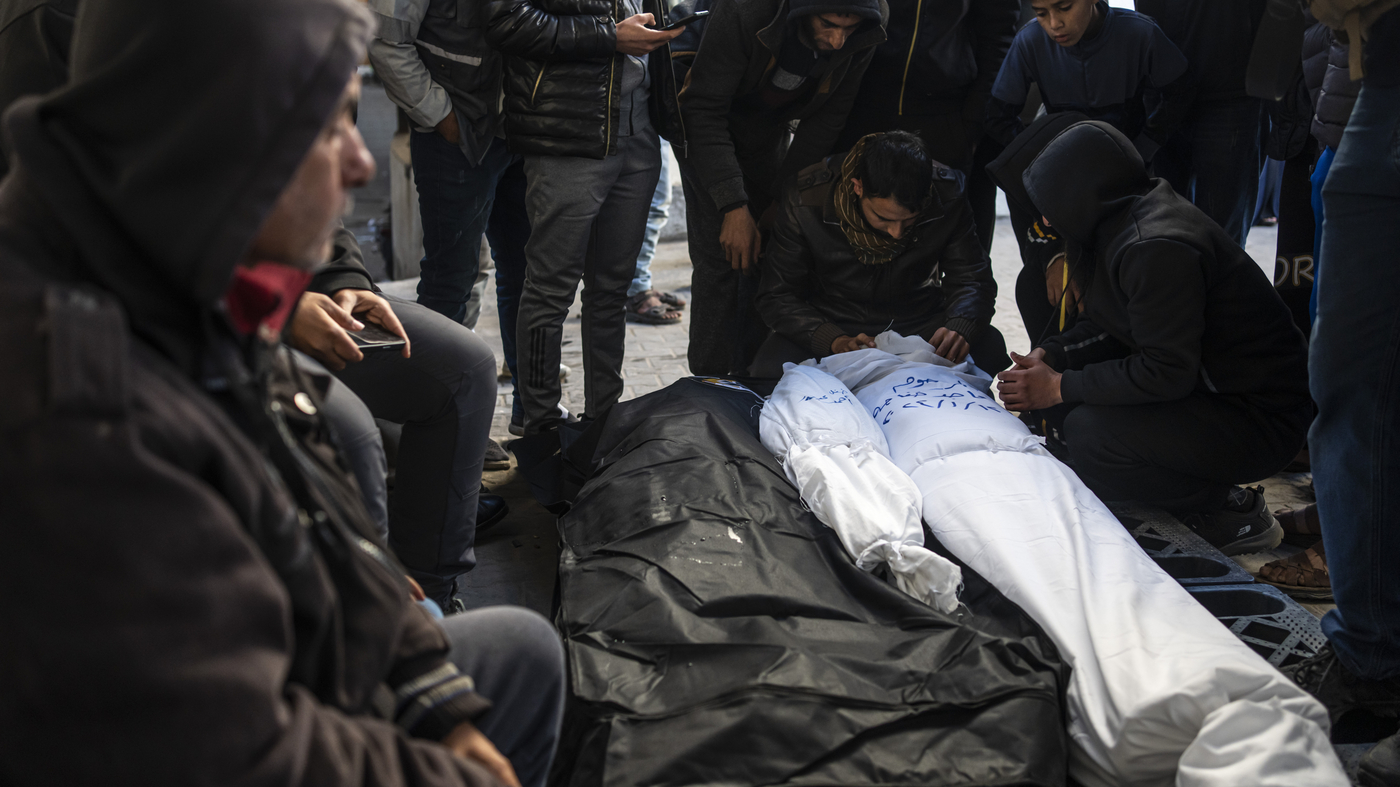The Gaza Strip has become a volatile place for civilians and children: Israeli airstrikes killed 30 people, including children, in the last 24 hours
RAFAH, Gaza Strip — More than 30 Palestinians, including young children, were killed in two Israeli airstrikes overnight into Saturday in the Gaza Strip, officials said, as concerns continued to grow over a lack of fuel and supplies for overburdened hospitals. Video provided by Gaza’s Civil Defense department showed rescue workers searching through the twisted rubble of a home in Gaza City by flashlight early Saturday morning after it was hit by an Israeli attack. Footage showed them carrying a young girl wrapped in blankets with injuries to her face, and at least two other children who appeared dead. The boy covered in dust cried as he was loaded into the ambulance. The attack on the home in the Daraj neighborhood killed at least 20 people in total, according to Civil Defense spokesperson Mahmoud Bassal. Another strike near the southern city of Rafah on the Egyptian border killed at least 13 people, including two children. The bodies of people killed from a displaced family from central Gaza were taken to a hospital where they were seen by an Associated Press reporter. 135 Palestinians were killed in the last 24 hours, according to the Health Ministry in Hamas-run Gaza. The count does not differentiate between combatants and civilians, but the ministry has said about two-thirds of the dead are women and children. The ministry said the number of war injuries surpassed 60,000. Israel believes that Hamas is responsible for the high civilian casualties, because its fighters launch attacks from densely populated urban areas.
“What we have seen since 7 October is a stain on our collective conscience. It will become an indelible mark on our humanity unless we act. People will continue to suffer and die from the rockets, the bombs, the missiles and the bullets; and in increasing numbers from starvation, disease and exposure,” the United Nations humanitarian chief Martin Griffiths said Friday.
The Palestinian Ministry of Health keeps an updated death toll that doesn’t distinguish between civilians and fighters. But about 70% of the dead are women and children, the ministry says. Kids under the age of 18 make up 10,000 of the dead. There are more than 8,000 people believed to be dead under the rubble.
The health ministry tracks injuries as well. Hospitals have reported catastrophic injuries caused by airstrikes, including severe, full-body burns and crushed limbs. About 1,000 children have lost one or both legs, the aid group Save The Children said this week.
“An entire generation of children is traumatized and will take years to heal. Thousands have been killed, maimed, and orphaned. Hundreds of thousands are deprived of education. Philippe Lazzarini, the commissioner-general of UNRWA, said in a statement that their future is in jeopardy with long-term consequences.
The largest displacement of Palestinian people since the founding of Israel occurred in Gaza, where 85% of the population have been forced out of their homes.
Israel’s ground operations have forced the Palestinians to flee in central and southern Gaza over the past month. More than one million people are in Rafah, a city close to Gaza’s southern border with Egypt.
“Nowhere’s going to hell,” said Abu Ibrahim Sharran, a man that rode a bicycle on the streets of Khan Younis
We do not know what to do. We’re going from spot to spot,” said a man who called himself Abu Ibrahim Sharran, as he rode a bicycle loaded with a sleeping mat and clothes on the streets of Khan Younis earlier this month.
His family had already evacuated twice, he said, and he was looking for yet another place to stay. “My wish is for God to give everyone relief so that they can return to their homes, instead of being on the streets.”
Satellite imagery is believed to have the best estimate of the scale of destruction. Up to 160,800 buildings have been damaged in the Gaza Strip, according to an analysis by researchers at the City University of New York and Oregon State University.
“There are no beds available, so people are literally just on the ground, seeking treatment. There’s not really room or space for us to breathe or think,” said Dr. Seema Jilani, an American doctor who spoke to NPR after two weeks working at Gaza’s al-Aqsa Hospital as part of a team from the International Rescue Committee.
More than 600 healthcare workers have been killed in attacks and more than 800 have been hurt according to the WHO. Several ambulances have been damaged.
